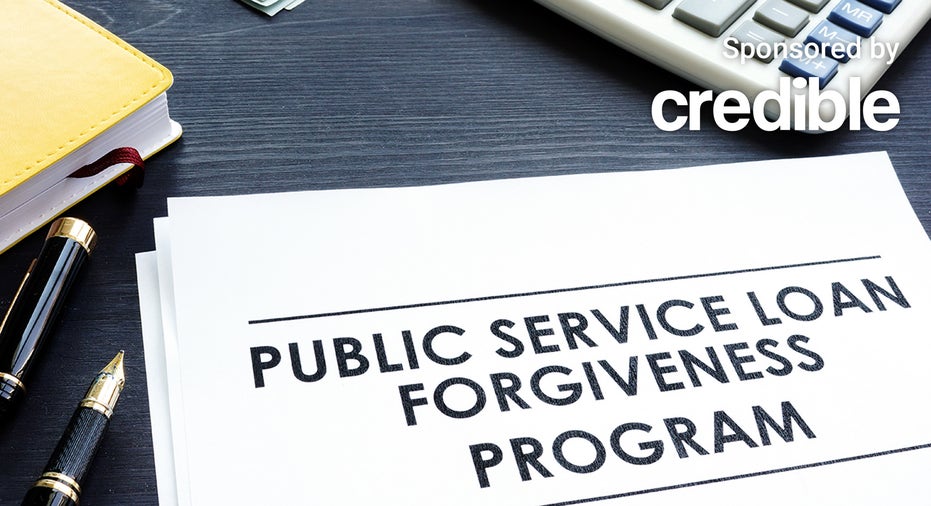Education Department updates PSLF program – here’s what changed
The ‘permanent changes reduce the red tape that riddled the PSLF program’

Temporary changes to the Public Service Loan Forgiveness (PSLF) program have helped more than 236,000 borrowers who work in public service secure more than $14 billion in debt relief, according to the Department of Education. (iStock)
The Department of Education announced Tuesday that some of the temporary changes it previously made to the Public Service Loan Forgiveness (PSLF) program will become permanent.
The program was established in 2007 to forgive public service employees' remaining federal student loan balances after 10 years of working full-time and paying off their loans. However, confusing eligibility criteria caused many applicants to be rejected, with only a small percentage of borrowers receiving forgiveness.
But in October 2021, the department expanded the PSLF program to allow more borrowers to qualify, although the changes were for a limited time and set to expire on Oct. 31, 2022. Over the past year, the department said that the temporary changes helped more than 236,000 teachers, nurses, veterans, government employees and other public service workers secure more than $14 billion in debt relief.
Ahead of this deadline, the department announced that some changes under the waiver will be permanently adopted into PSLF, including that:
- Borrowers can obtain credit toward PSLF on late, partial or lump sum payments
- Borrowers can receive credit for certain months in deferment or forbearance, such as those tied to military service or deferments for economic hardship or cancer treatment
Borrowers can find a complete list of the updates in the Education Department's fact sheet. The regulations will go into effect on July 1, 2023.
"Today, we're encouraging public service workers to take advantage of the program's temporary changes before the deadline on Oct. 31," Secretary of Education Miguel Cardona said. "At the same time, we're taking bold steps that will automatically move more hardworking public service workers closer to forgiveness and making permanent changes to reduce the red tape that riddled the PSLF program."
If you have private student loans that don't qualify for federal student loan forgiveness, you could consider refinancing to a lower interest rate to reduce your monthly payments. You can visit Credible to find your personalized interest rate without affecting your credit score.
WILL REFINANCING YOUR STUDENT LOANS SAVE YOU MONEY?
Here's what the department won't keep from the temporary PSLF waiver
Beginning in November, the Department of Education is doing away with a few key provisions of the PSLF waiver.
Among them is that borrowers will no longer be allowed to count the same period of service toward both Teacher Loan Forgiveness (TLF) and PSLF.
The limited waiver also allowed qualifying borrowers who left their field during the pandemic to still qualify for forgiveness. Once the waiver expires, a borrower must work for a qualifying employer when they apply for and receive PSLF forgiveness.
"We encourage borrowers to apply as quickly as possible, particularly if they have benefited from Teacher Loan Forgiveness or are no longer working at a qualifying employer," the Education Department said.
If you have private student loans, federal forgiveness programs won't apply to you. Instead, you could consider refinancing your student loans to lower your monthly payments. You can visit Credible to find your personalized interest rate without affecting your credit score.
GOOD NEWS: STUDENT LOAN REFINANCE RATES EDGE DOWN FOR 10-YEAR FIXED-RATE LOANS
Appeals court blocks student debt relief
Updates to the PSLF program are a part of the Biden administration's broader student debt relief effort, which also includes a plan to provide up to $20,000 in debt forgiveness to 40 million eligible borrowers. However, a federal appeals court placed a temporary block on the plan last week after ruling in favor of six Republican-led states that sued to stop the relief program.
Despite the new development, the White House advised borrowers to continue applying for relief through the application portal that was recently launched.
"Tonight's temporary order does not prevent borrowers from applying for student debt relief at studentaid.gov – and we encourage eligible borrowers to join the nearly 22 million Americans whose information the Department of Education already has," White House press secretary Karine Jean-Pierre said in a statement. "It also does not prevent us from reviewing these applications and preparing them for transmission to loan servicers."
The order "merely prevents debt from being discharged until the court makes a decision," Jean-Pierre added.
In addition to the roughly 22 million borrowers who have already applied for relief, more than $38 billion in student loan cancellations were approved for 1.75 million borrowers, the Education Department said.
If you have private student loans and don't qualify for federal student loan forgiveness, you could consider refinancing your loans to a lower interest rate, reducing your monthly payments. Visit Credible to find your personalized interest rate without affecting your credit score.
SUPPORT FOR STUDENT DEBT FORGIVENESS DROPS IF IT MEANS CERTAIN TRADE-OFFS: POLL
Have a finance-related question, but don't know who to ask? Email The Credible Money Expert at moneyexpert@credible.com and your question might be answered by Credible in our Money Expert column.




















